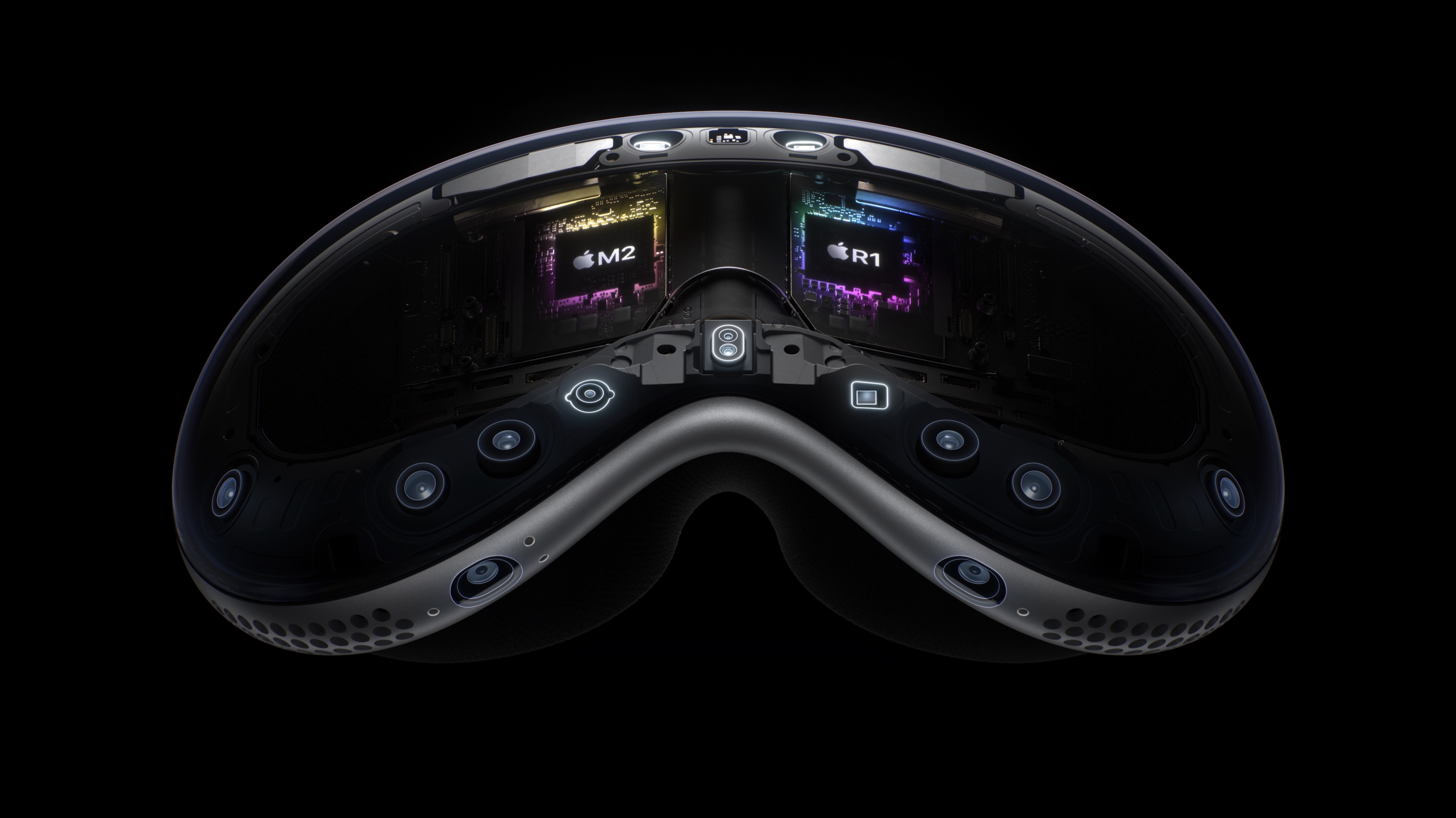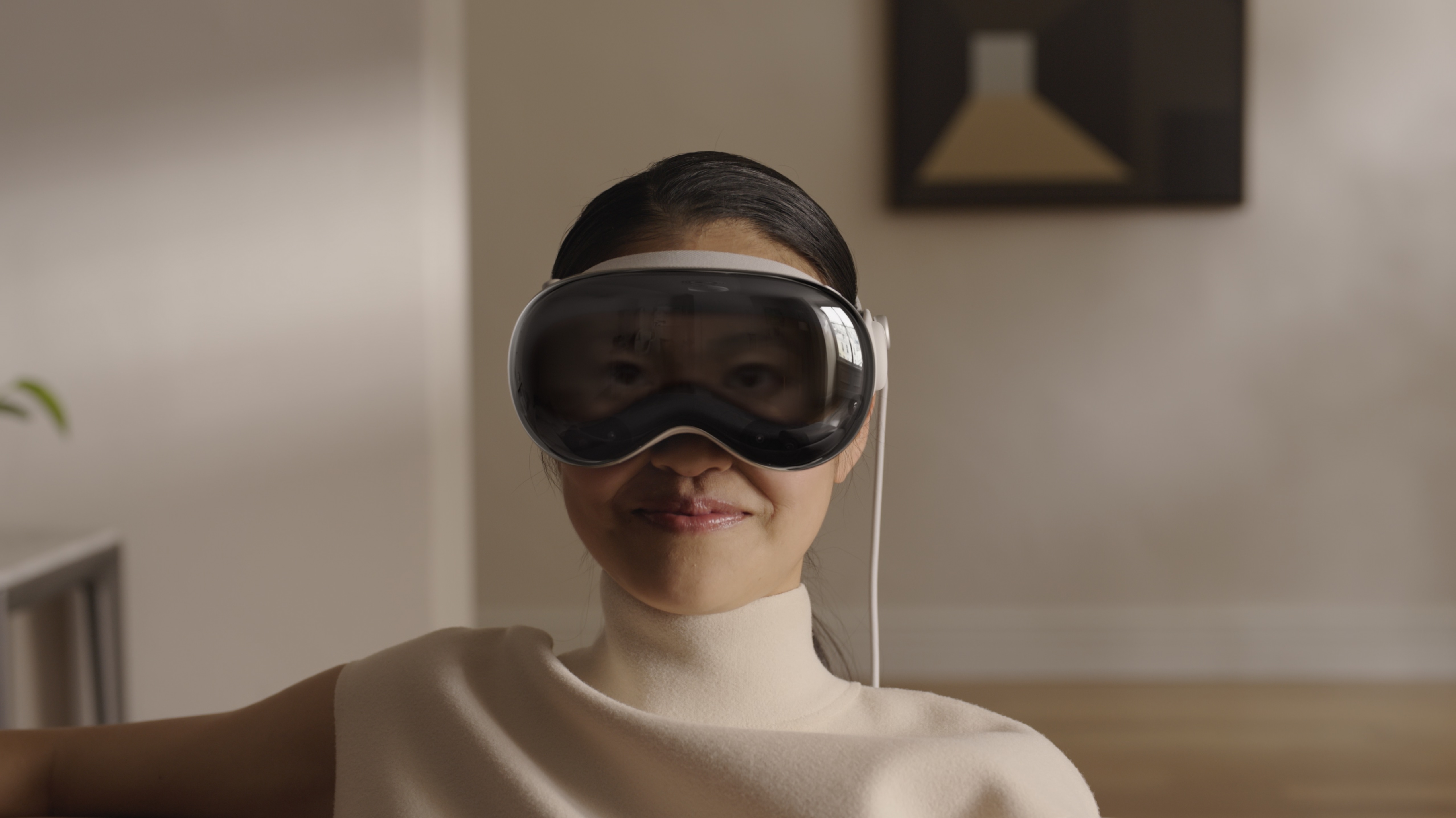
Apple just unveiled the Vision Pro, a device that Apple CEO Tim Cook prefaced by calling augmented reality (AR) a "profound technology," setting the wheels in motion for its first wearable headset. But the product Apple announced isn't an AR headset the way you might be thinking. It's nothing like the HoloLens, which I'd consider to be "true AR" with a passthrough pane.
Instead, it's more a virtual reality (VR) headset that simulates AR experiences using cameras and displays the real world onto a pair of screens, which is sometimes known as augmented virtual reality (AVR.) That's okay, and I'm sure it's going to be the best AVR headset ever, but that's not a true HoloLens competitor in my eyes.
I am a huge fan and advocate of AR and VR. I love VR for what it is, and I'm hopeful that AR will become a reality in the near future. I want true AR to be a thing, and I'd be more than happy for Apple to get there first if that's what it takes. But the Vision Pro is a VR headset. Heck, call it an MR headset for all I care. But it's not a consumer version of HoloLens. Here's why.
Projecting the world onto 2D screens isn't augmenting reality, it's virtualizing it

To kick things off, viewing the world through a pair of 2D screens, however bright, sharp, or fast they are, isn't able to replicate the real world one-for-one. Vision Pro will almost certainly have a FOV that's less than your eyeballs so that you will see the edges of the displays in your peripheral while in the VR headset.
Viewing the world through a pair of screens, captured by the 12 cameras Apple is using, is not going to be an ideal way of actually experiencing life. Apple did a lot to present Vision Pro as a headset you'll enjoy wearing outside or when hanging with friends, which is laughable for an enclosed headset.
A true AR headset like HoloLens doesn't use screens to augment your reality. These headsets (and glasses) achieve AR experiences by projecting virtual elements onto a transparent or translucent pane that enables you still to view the real 3D world with your eyes.
This is an essential distinction because viewing the world through a pair of screens removes important things like true depth and focus. It becomes much harder to determine how far away things are when looking at them through two flat screens. With HoloLens 2, you're still able to determine things like depth and focus easily because two screens don't impair your vision.
Of course, I'm not saying wearing a HoloLens is an ideal way of experiencing life, but I am saying it's closer to that end-goal of an ambient AR headset than the Vision Pro is.
VR headsets are inherently anti-social, and that doesn't change with Vision Pro

VR headsets are anti-social in nature. When wearing a VR headset, the world is blocked out from you, and you are blocked out from the world. This doesn't look to have changed with Vision Pro. Wearing a VR headset is like wearing a pair of headphones; socially, others understand not to disturb you unless it's crucial.
If you've ever come across someone who insists on speaking to you with their headphones in, it comes across as a little rude, right? I always try to take at least one headphone out if someone is trying to speak to me, even if I don't have any music playing, so they know that I'm giving them my attention.
Now imagine this scenario but with a massive face-covering headset on. You wouldn't try to seriously conversate with someone wearing a Meta Quest or HTC VIVE, yet Apple thinks you'll love using the Vision Pro in the real world, surrounded by people not wearing one.
Just imagine trying to talk to a friend or loved one about life while they're wearing a Vision Pro on their head. This would be so impersonal and frankly rude of the person wearing the headset. Apple is trying to mitigate this by including a screen on the front that virtualizes your eyes, and that's frankly a mockery.
Vision Pro is anti-social, and that's a problem for most VR headsets.
I don't know about you, but I'd feel pretty damn stupid trying to talk to someone while looking into their 2D virtualized eyes. It's a literal social barrier between you and the person you're interacting with, and it's just not going to fly in the real world like Apple seems to think it will.
An actual AR headset suffers from these sociable issues much less. Because an AR headset is open, with a direct view of the real world at all times, even when the headset is off. Talking to someone wearing something like a HoloLens 2 is much less awkward for both parties involved, and this is even less of a problem with AR glasses.
In Apple's unveiling video for the Vision Pro, that front display with the eyes makes it seem like the headset is translucent, which would make it a true AR headset. It wasn't until about 15 minutes into the presentation that Apple revealed it was a screen. If you've been following the rumors, you probably already knew that though.
If VR headsets make you sweaty or claustrophobic, Vision Pro likely won't change that

As mentioned, the Apple Vision Pro will simulate your reality by displaying the real world, using cameras, onto two 2D screens. To achieve this effectively, the area where the headset rests on your face will be enclosed to ensure the displays come across as bright as possible.
This means the headset will be resting right up against your face, and if you've used any VR headset before, you'll know this usually ends up with you being quite sweaty around the eyes after half an hour. This isn't something that happens on devices like the HoloLens 2, which don't rely on being enclosed to function correctly.
HoloLens 2 doesn't even rest on your face because it doesn't need to. The device is light enough to hang from the headband, and because it's an actual AR headset, it doesn't need to block out the real world around your peripheral view to accurately display the world in the visor because you can already see the real world through it.
Plus, if you're claustrophobic, I already know the idea of suffocating the top half of your face in a VR headset isn't appealing to you, and being able to see the edges of the displays in your peripheral likely won't help either.
Apple Vision Pro is going to be an amazing VR headset, with great augmented experiences

Let me clarify: The Vision Pro will likely be the best VR headset ever to grace the planet. Its high resolutions screens are going to be so incredibly immersive, and its FOV will likely rival or even best VR headsets on the market currently. It's going to make VR headset makers up their game.
I don't have a problem with Vision Pro as a VR headset. My problem lies with how Apple is trying to position the device as a true AR headset, which it isn't. Just because it can simulate an augmented space doesn't make it a good AR headset because there's so much more to a good AR headset than simply displaying the real world in front of you and putting virtual elements on top of it.
A good AR headset isn't achievable when you shove two screens in front of your eyes and enclose half your face to use it. Half the point of AR is the ease of use and the open-nature of it. You don't feel restricted by wearing AR headsets. The same cannot be said with VR headsets.
Vision Pro is a stepping stone to a true AR product, but we're not there yet

I think it's clear that the Vision Pro isn't the device Apple wants to make, but it's a stepping stone to something much more sociable, personable, and mobile. A true AR headset, one that doesn't rely on enclosed 2D screens to simulate the real world, is the AR device I'm hoping Apple is one day able to make.
We're already halfway there with devices like the HoloLens 2, which project virtual elements onto the real world without forcing you to view the world on 2D panels. But the HoloLens 2 is far from the perfect AR headset too. While it's certainly less anti-social than the Vision Pro, it's still too big to wear when out and about.
If I were to compare the HoloLens 2 with my headphones analogy from earlier, I'd say the HoloLens 2 represents pulling one headphone out to conversate with somebody. It's better, but it's not as good as giving someone your undying attention. That would be the equivalent of a pair of every day eye glasses.
With that said, HoloLens 2 has proven itself acceptable to use in the workplace in scenarios such as meetings or chatting with colleagues with the headset on. At no point does wearing a HoloLens feel like I'm locked into a headset. Because of this, I can't imagine the Vision Pro being an acceptable device to wear at work in a professional setting, let alone with friends in a social setting.
So, for now, enjoy your $3,500 VR headset, world. I'm still waiting for the first good consumer AR headset.








